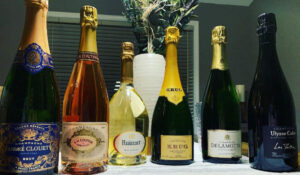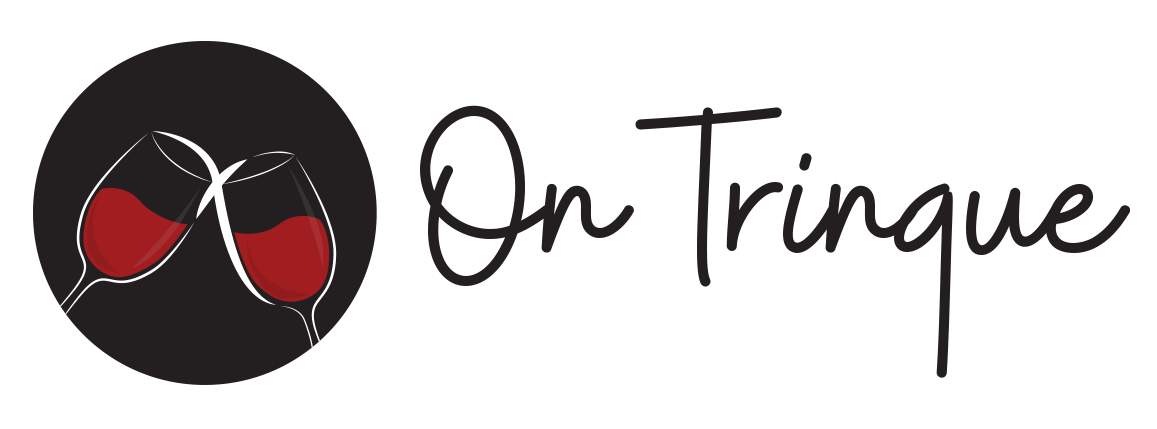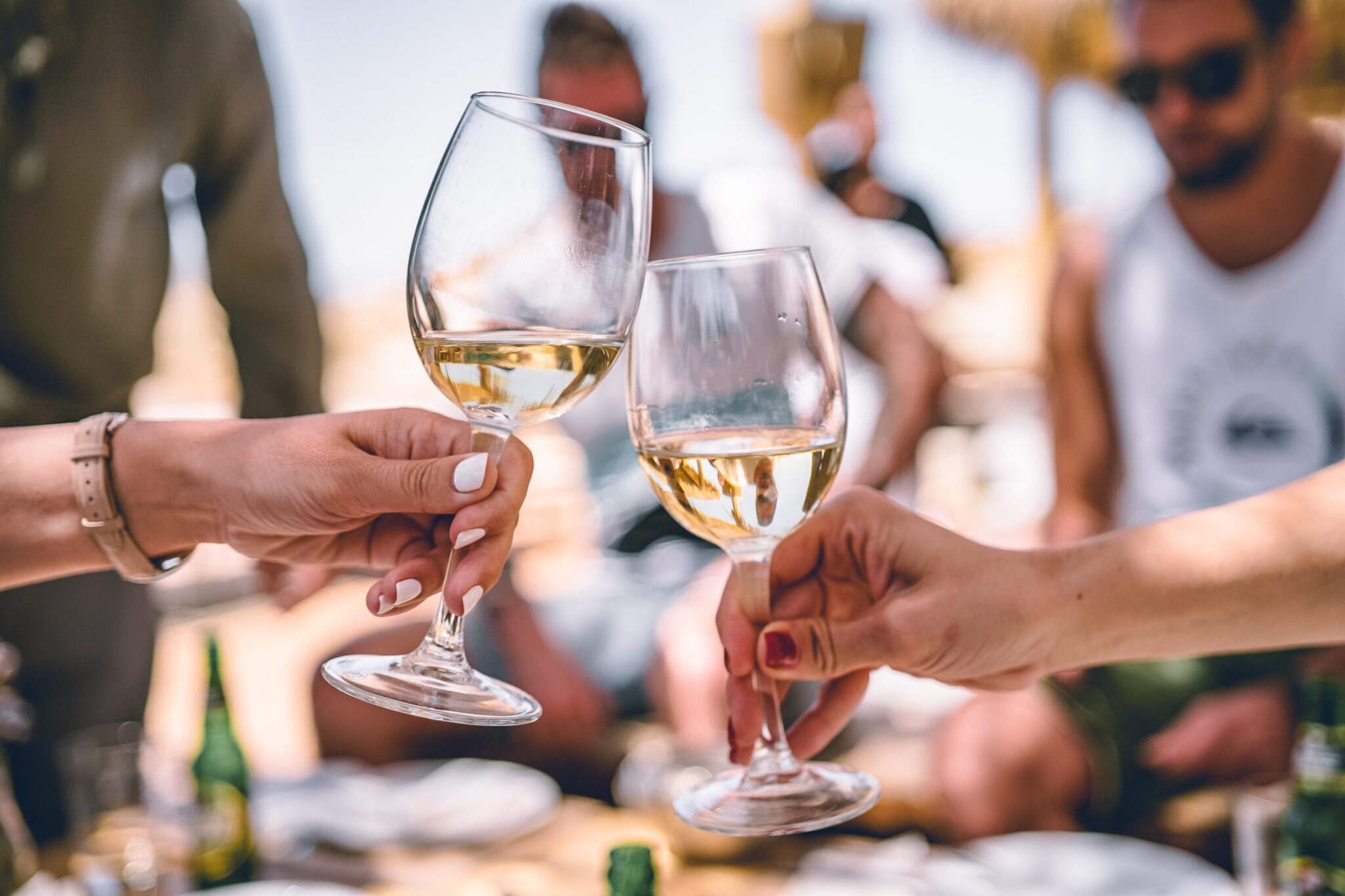Most people view Champagne wines as a treat for special occasions, delegating dinner pairings and after-work imbibes to the classic bubble-less reds and whites. But there’s no reason Champagne can’t escort you through your daily life as well. So long as you’re comfortable navigating the labels, they can bring a sparkle to ordinary occasions, too. I connected with my friend William Oben, a wine enthusiast and founder of WineBox, who put together a stellar lineup of Champagnes at different price points.

Krug NV Brut – 167th Edition
K-r-u-g. Simply seeing these four letters on a Champagne label prompts an involuntary “mmmm.” “This is probably my absolute favorite Brut Champagne on the planet,” says William.
We drank the 167th edition of the NV (Non-Vintage). Champagnes are often NV, meaning that grapes from more than one harvest are in the bottle. William taught me a good tip: if you want an idea of the vintages used in NV Champagnes, you can search the disgorgement date found on the bottle which will give clues about the flavor profiles.
“This Champagne is mostly a blend of Pinot Noir and Chardonnay with a little Pinot Meunier to make it perfect,” explains William. “Beginning with fragrant brioche and apricots on the nose, the wine coalesces on the palate with ample fruit: apricots, peaches and ripe apples,” he continues.
It’s deliciously creamy and balanced with a gripping acidity and long finish. At just under $200 per bottle, it’s a good one to have on-hand for a special occasion.
Delamotte NV Blanc de Blancs
“This is the fifth oldest Champagne house in France,” enthuses William. “Established in 1760 by Francoise Delamotte, it evolved into a collaboration with the superstar Champagne house of Salon. We in wine circles refer to Delamotte as ‘Baby Salon.’”
Composed completely of Chardonnay grapes from a single vineyard, the wine hints at apple peel, bread and spice on the nose. The palate yields bright green apple, subtle honey, hazelnut and baker’s yeast. Crisp acidity is rounded out by chalky minerality for a long and balanced finish.
“It’s a fairly under-the-radar Champagne that should be a staple of your cellar,” says William.
By using different winemaking methods, Delamotte maintains the caché of Salon at a more affordable price point – around $60.
André Clouet Grande Réserve Brut
“I call this ‘designer Champagne’ since the cellar master creates individual blends with different fermentation methods to arrive at the final Grande Réserve Blend,” describes William.
This Champagne is composed completely of Pinot Noir from Grand Cru sites, which is the most prestigious classification for the vineyard land and implies the highest quality grapes. On the nose, the wine reminds me of bread pudding with floral nuances and hints of orange zest. Fine bubbles interplay with baking spices for a long and full finish that’s rounded out with hints of honey. William sums it up best: “this wine has lovely acidity and sass.”
It’s one of the best values in the Champagne aisle, at around $40 a bottle. I enjoyed it on a Sunday afternoon with a football game and a bowl of potato chips.
Courtier Rosé
“This is a lighter but delicious rosé,” William gushes, “with medium bodied fruit. And did I mention delicious?”
With 85% Chardonnay and 15% Pinot Noir blended in, this Champagne is mostly based on the 2015 vintage, and it all comes from Grand Cru fruit. It opens with notes of strawberry on the nose, giving way to flavors of scone and spice. At around $45 a bottle, this is a versatile addition to any wine cellar.
It’s “the perfect spring and summer sipper for not a lot of dough,” according to William. I found this rosé to be supremely appetizing, and it paired perfectly with a light brunch.
Ruinart Blanc de Blancs
“Ruinart is one of those bottles that, for some reason, I don’t think about too often. But when I do get to open it, it sure lets you know it means business,” observes William.
Ruinart is the oldest Champagne house in France, and they deliver what William calls “very consistent notes on this very reliable champagne.” It has hints of citrus and a nice bread with light fruit. The long, smooth finish is baking spices mingling with ripe, caramelized apple for creamy, elegant notes of apple pie. The fine, tiny bubbles are well integrated and the acidity is balanced.
William describes it as an “amazingly fresh and balanced Chardonnay, bright and with loads of white fruit flavors and aromas.”
I enjoyed this at the end of a Saturday night with a board game. “Please look to the Dom Ruinart Bottling as well,” William implores. “It’s one of the best Vintage champagnes in the market.” You can pick it up for around $75.
Ulysses Collin Les Maillons Blanc de Noirs
“Now this is what Champagne dreams are made of,” exclaims William.
I have to agree. This is the first time I’ve had a Ulysses Collin wine and it doesn’t surprise me when William tells me he’s one of the most exciting producers in Champagne to-date. Composed completely of Pinot Noir, the grapes come from a small plot near the town of Sezanne.
For me, the nose is almost nostalgic with layers of caramelized apple, pear and vanilla ice cream. On the palate, it reminds me of a white Burgundy thanks to a complex balance of fruit and minerality.
“It’s succulent and fresh with perfect balance and acidity,” says William. “Make sure you get to try this before I drink it all.” At around $100 per bottle, it’s well worth it to try at least once.
This article was originally published in the March 2021 issue of New York Lifestyles Magazine.




Comments are closed.